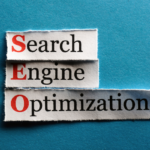 On-Site Search, Conversion Booster! You’ve been in the internet marketing game for a while now. You probably feel like your online marketing campaigns are optimized for conversions that produce a favorable Return on Investment (ROI). Great. You have leveraged the data in your online marketing campaigns (paid, organic, email, video, display ads) to make sound decisions to continually improve conversion rate optimization and ROI. Have you implemented an internal search feature on your website that aims to enhance your website’s usability and therefore increase conversions and work towards your ROI goals? And are you tracking your on-site searches and regularly analyzing the data to better convert your website visitors? It certainly isn’t any new technology, site’s have had on-site search tools for years. However, in the “Crowd-Sourcing” age, are you using what others are telling you that they are looking for to its highest benefit? Having an on-site search incorporated into your design is half the battle. Many content-heavy websites attempt to solve usability problems only with design and navigation, without the aid of a site search. That solution may work for some website visitors, but not for all. Time is money, and you’ve worked hard to get people to your site. If they can’t quickly find the information they need, they’ll be gone before you know it and knocking on the door of your competitor. A properly placed and accurate on-site search tool can help keep visitors on your site longer by serving them the right information they need. Honing in on your internal site search visitors can provide an extra needed boost to your online conversions. Collecting The Data If you are using a site search tool that cannot track the queries in a system admin or within your website analytics, it may be time to consider a new one. Without capturing the keyword search queries you’ll have a difficult time making optimization decisions that affect your bottom line. Google offers a site search tool starting at $100. When integrating site search data within your analytics, you can obtain powerful information to be used for conversion rate optimization. You must always have measurable goals tracked with your website analytics! This will allow you to track your progress and report back to your team with results that are tied to leads or sales. Advantages of On-Site Search Tools
On-Site Search, Conversion Booster! You’ve been in the internet marketing game for a while now. You probably feel like your online marketing campaigns are optimized for conversions that produce a favorable Return on Investment (ROI). Great. You have leveraged the data in your online marketing campaigns (paid, organic, email, video, display ads) to make sound decisions to continually improve conversion rate optimization and ROI. Have you implemented an internal search feature on your website that aims to enhance your website’s usability and therefore increase conversions and work towards your ROI goals? And are you tracking your on-site searches and regularly analyzing the data to better convert your website visitors? It certainly isn’t any new technology, site’s have had on-site search tools for years. However, in the “Crowd-Sourcing” age, are you using what others are telling you that they are looking for to its highest benefit? Having an on-site search incorporated into your design is half the battle. Many content-heavy websites attempt to solve usability problems only with design and navigation, without the aid of a site search. That solution may work for some website visitors, but not for all. Time is money, and you’ve worked hard to get people to your site. If they can’t quickly find the information they need, they’ll be gone before you know it and knocking on the door of your competitor. A properly placed and accurate on-site search tool can help keep visitors on your site longer by serving them the right information they need. Honing in on your internal site search visitors can provide an extra needed boost to your online conversions. Collecting The Data If you are using a site search tool that cannot track the queries in a system admin or within your website analytics, it may be time to consider a new one. Without capturing the keyword search queries you’ll have a difficult time making optimization decisions that affect your bottom line. Google offers a site search tool starting at $100. When integrating site search data within your analytics, you can obtain powerful information to be used for conversion rate optimization. You must always have measurable goals tracked with your website analytics! This will allow you to track your progress and report back to your team with results that are tied to leads or sales. Advantages of On-Site Search Tools
- Quickly capture the impatient website visitor: Like it or not, the Internet has contributed to impatience, and internal site search can cater to those with the attitude of “I want this now.”
- Provide an answer to the second-most important question: Oftentimes a user will arrive via an organic or paid search engine query to address their first question or problem – i.e. “Foursquare T-Shirts Denver,CO.” Their next question might be an internal search for “pricing” or “shipping time.” Make sure you are serving up content to support the intent of these queries that lead to conversions.
- Quickly capture the impatient website visitor: The Internet has contributed to our impatience as a society, and internal site search can cater to those with the attitude of “I want this now.”
- Expand product or service offerings: If you are seeing searches for products or services you don’t offer, consider adding them to your mix if your visitors or existing customers are actively searching for them on your site.
- Identify usability issues: A high volume of site searches for one particular keyword may indicate people are having trouble finding information through navigation or content. Look for trends that can uncover missing content or buried pages that the visitor needs to make a decision.
- Place power in the hands of multiple website users: Use the site search to your advantage and allow different types of users to find what they need: price shoppers, qualified prospects, knowledge seekers, wise buyers, existing customers, long-term partners.
- Refine your keyword optimization: Site search data can uncover new keywords you didn’t consider for initial paid or organic search engine optimization. Perhaps your visitors are using a different word that has the same meaning. Don’t try to force feed your website visitors technical jargon or keywords that have little meaning to them.
Analyze The Data You’ve Collected A thorough and actionable analysis of internal site search can make even a seasoned analytics expert’s head spin. If you do not fully grasp those techniques right now, follow the steps below to initially help make recommendations to improve the results of site search, which can lead to increase conversions on your website. First focus on uncovering major issues, then dig a little deeper with the goal to continually improve the site search results and how they relate to conversions. Look to challenge yourself with how quickly you can interpret the data and make sound decisions that positively affect conversions.
- Select a timeframe in your analytics of at least one full year. This will help uncover any trends or seasonality.
- Export a list of the top 25 to 50 keywords.
- Perform a live search on the site to see what results are returned for each keyword in the list.
- Record which page was served as the top result.
- Record the “matching quality” – high, average, low, not relevant.
- Review conversions tied to the keyword search.
- Record your observations on the effectiveness of the top search result. Is there another page that would better match the search? If so, why?
- Provide recommendations on how to resolve any issues you come across or how to make the top returned result more effective for keeping a visitor on your site and resulting in a conversion.
- Take action with implementation.
- Measure the results.
The Effects Of On-Site Search Optimization
- Improved organic keyword traffic: If your top pages are better matched to your internal site searches with keyword-focused content, you can potentially see improvements with organic search traffic as well. Keep in mind that there isn’t always a direct correlation with search engine searches and internal site searches, but it’s not gonna hurt!
- Improved bounce rates and time on site: Optimized site search can keep visitors on your site longer if they get the information they need. If your site search is helping resolve the visitor’s initial reason why they came to your site, you should see lower bounce rates for individual keywords, and for the entire site.
- Refinement in content and call-to-action optimization: The site search data can uncover what content you may be missing from your site, and also show what may motivate the searcher. This can help refine your calls to action and content. Are visitors looking for “free shipping,” “shipping methods,” “shipping time,” “promo codes,” “accessories,” “order online,” “sizing chart,” “management team,” etc.?
- Improved conversion rate: Lower bounce rates and increased time on site can increase the chances a quality conversion will happen. Analytics will often show that visitors using site search will convert at a much higher rate.
Bottom-line, always go into the process trying to understand your website visitor and how you can solve their problems with your content.





 8055 E Tufts Ave Ste 240
8055 E Tufts Ave Ste 240




